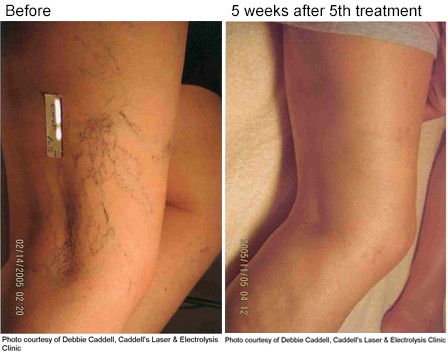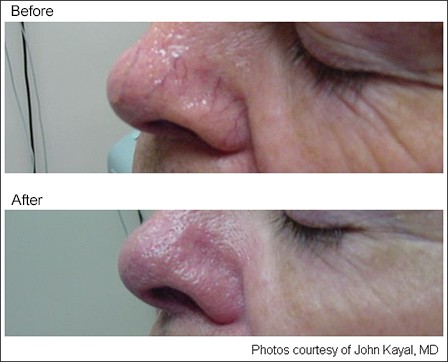Broken Veins on face & legs
About half the population suffer from broken leg veins. Leg veins are mainly caused by oestrogen, prolonged standing, obesity and inheritance. There is usually a source of high pressure from incompetent or damaged valves.
Laser for Face & Leg veins
Safe, comfortable & effective vein removal. Telangiectasia is also known as broken veins develop as we age and our skin and blood vessels become less elastic. Veins tend to become larger and increase in number over time. Brief pulses of laser light coagulate the blood in the vein. The coagulated blood reabsorbs through our natural elimination system over a period of about 3 -4 weeks afterwards in the case of facial veins, and leg veins take up to 6 weeks to reabsorb. A Pulse dye laser such as the N Lite Laser, which has a short wavelength 585nm is best to treat thin red superficial veins that are close to the skin surface. Deeper veins need the Nd: YAG Laser which has a longer wavelength of 1064nm to reach them. Some leg veins can be quite difficult to treat because they don’t always run parallel to the skins surface, they may run deep and laser light doesn’t always reach deeply enough to destroy them. Veins in the lower part of the leg, particularly the ankle area are more difficult to treat than those on the thighs. It’s not possible to get rid of all veins, but around 90% clearance is common. Most clients are satisfied with about 3 sessions of laser vein removal on the face. The number of sessions required for leg veins depends on how widespread they are.
Broken Veins


Our Cutera NdYAG laser successfully treats leg veins. It is a safe, effective and comfortable procedure that does not involve painful injections. Read more. The number of treatments required depends on how widespread they are.